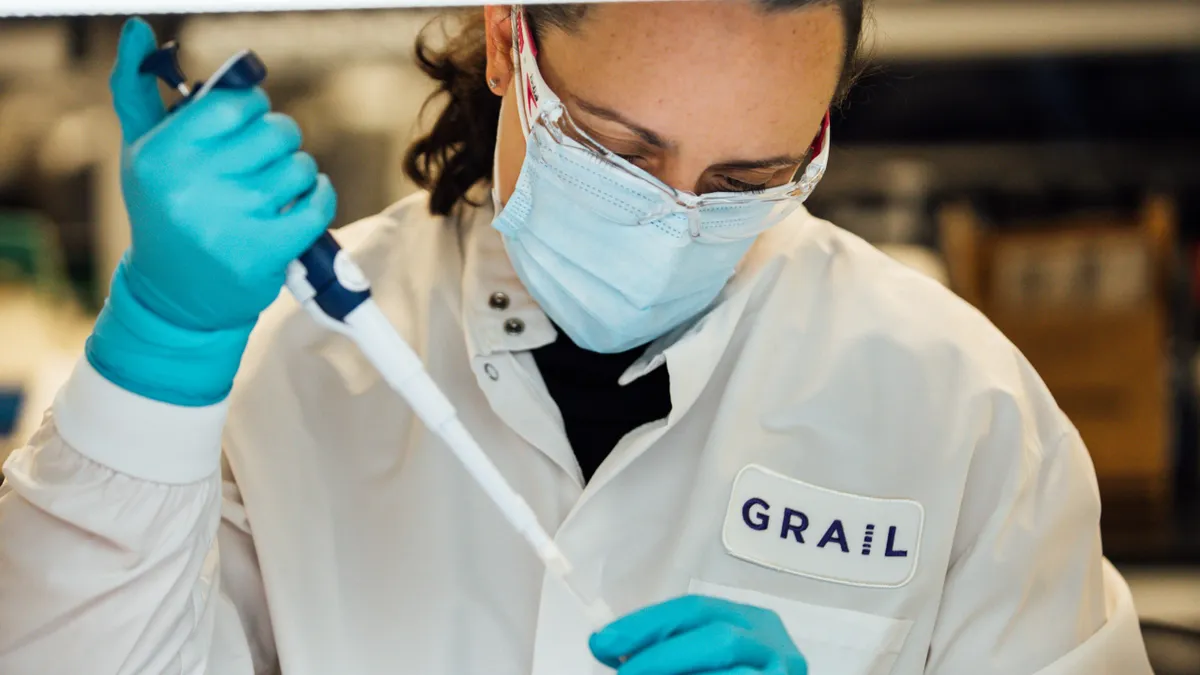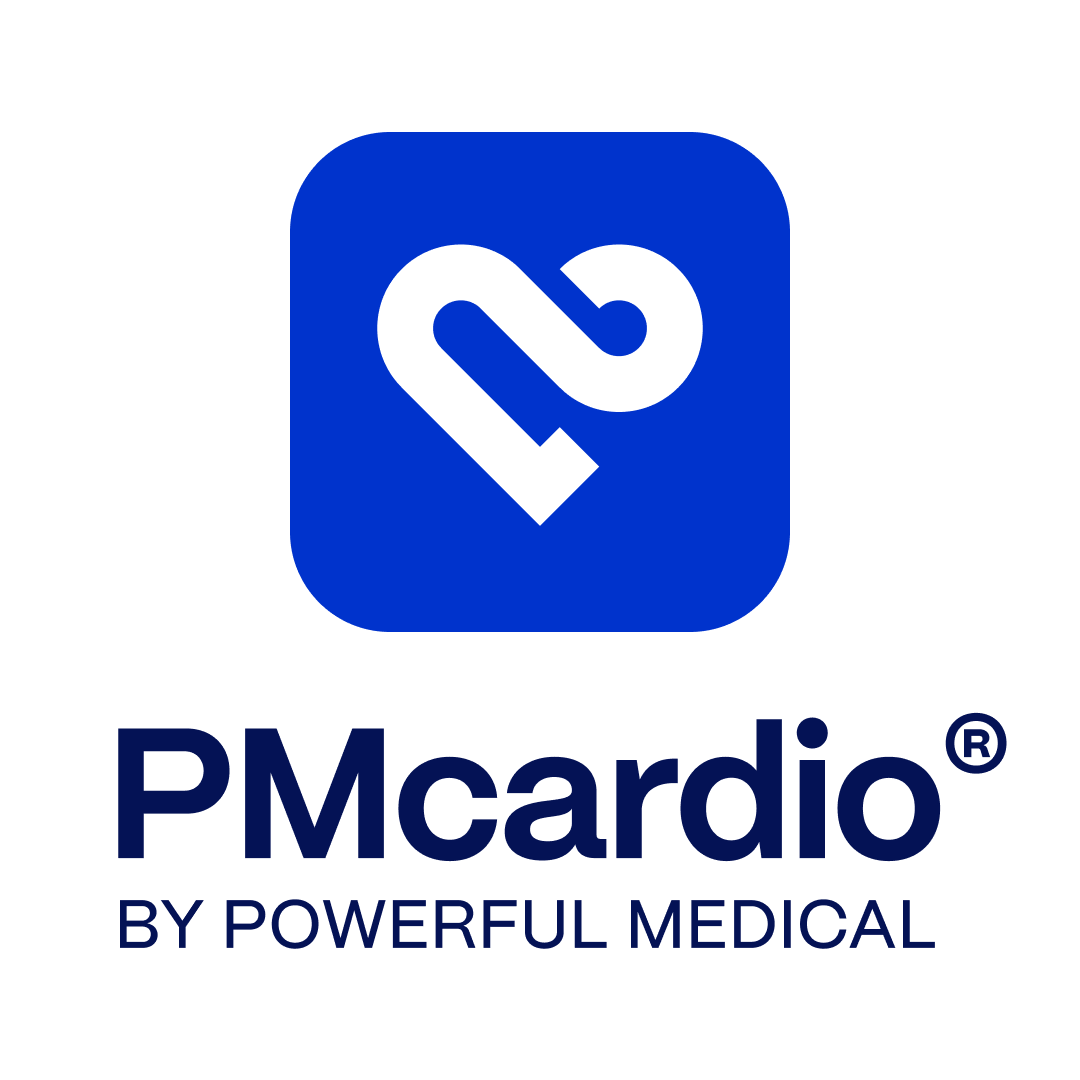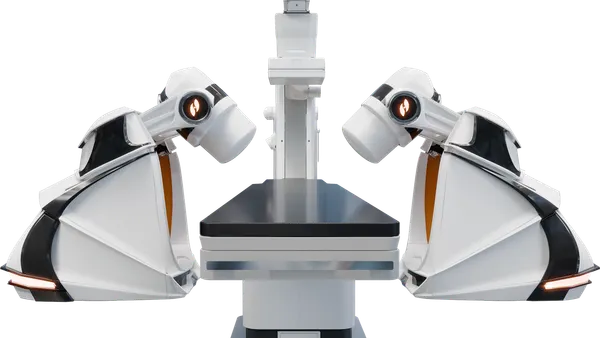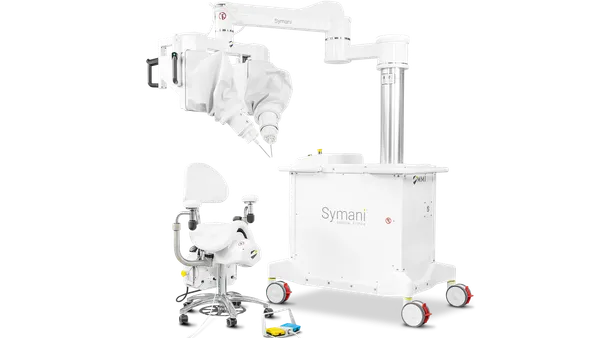Dive Brief:
- Stereotaxis said Monday it received 510(k) clearance for the latest iteration of its robotic magnetic navigation system for endovascular surgery. The design addresses hospital infrastructure challenges that slowed adoption of earlier versions of the technology.
- Called GenesisX, the new system has magnetic shielding built into its structure, eliminating the need for installation in operating room walls. It operates on standard power and requires no structural anchoring. Other improvements include miniaturized electronics and a smaller system cabinet.
- Stereotaxis announced the Food and Drug Administration authorization a day before reporting lower revenue and a wider net loss in the third quarter, compared with the same period a year ago. CEO David Fischel, on a Tuesday earnings call, said the company expects GenesisX orders to outpace those of the earlier Genesis system once the new surgical robot is fully launched.
Dive Insight:
Stereotaxis’ robotic magnetic navigation technology is used in ablation procedures to treat cardiac arrhythmias such as atrial fibrillation. The physician controls the procedure from a computer interface to steer the catheter, which has a magnetic tip. Robotically controlled magnets next to the operating table help guide the ablation catheter.
The design changes to the GenesisX allow the system to be installed in existing cardiac catheterization labs without the need for modification and are intended to support broader adoption of the technology by healthcare providers, Stereotaxis said.
“For years, challenging infrastructure demands limited the adoption of robotic technology amongst the community of physicians interested in its clinical benefits,” Francis Marchlinski, director of electrophysiology at the University of Pennsylvania Health System, said in the company’s statement. “The GenesisX design changes that by dramatically simplifying installation.”
Stereotaxis’ Fischel, on the earnings call, said the launch of GenesisX removes structural barriers “that limited physician interest from translating into tangible adoption.” The company has begun a limited launch of the new system in the U.S. and Europe and is expanding its catheter line. GenesisX received Europe’s CE mark last year, and a proprietary ablation catheter called MAGiC that works with the system was launched in Europe earlier this year after gaining the CE mark.
Stereotaxis’ growing portfolio of proprietary catheters will be a key driver of growth in the coming years, Fischel said. In July, the company won 510(k) clearance for the MAGiC Sweep electrophysiology mapping catheter, following the 2024 acquisition of catheter developer Access Point Technologies. Stereotaxis is currently pursuing FDA authorization for the MAGiC catheter.
The company is also collaborating with CardioFocus to accelerate commercial availability of a robotic pulsed field ablation treatment for cardiac arrhythmias.
The company’s stock price was down nearly 15% to $2.43 on Wednesday morning.













